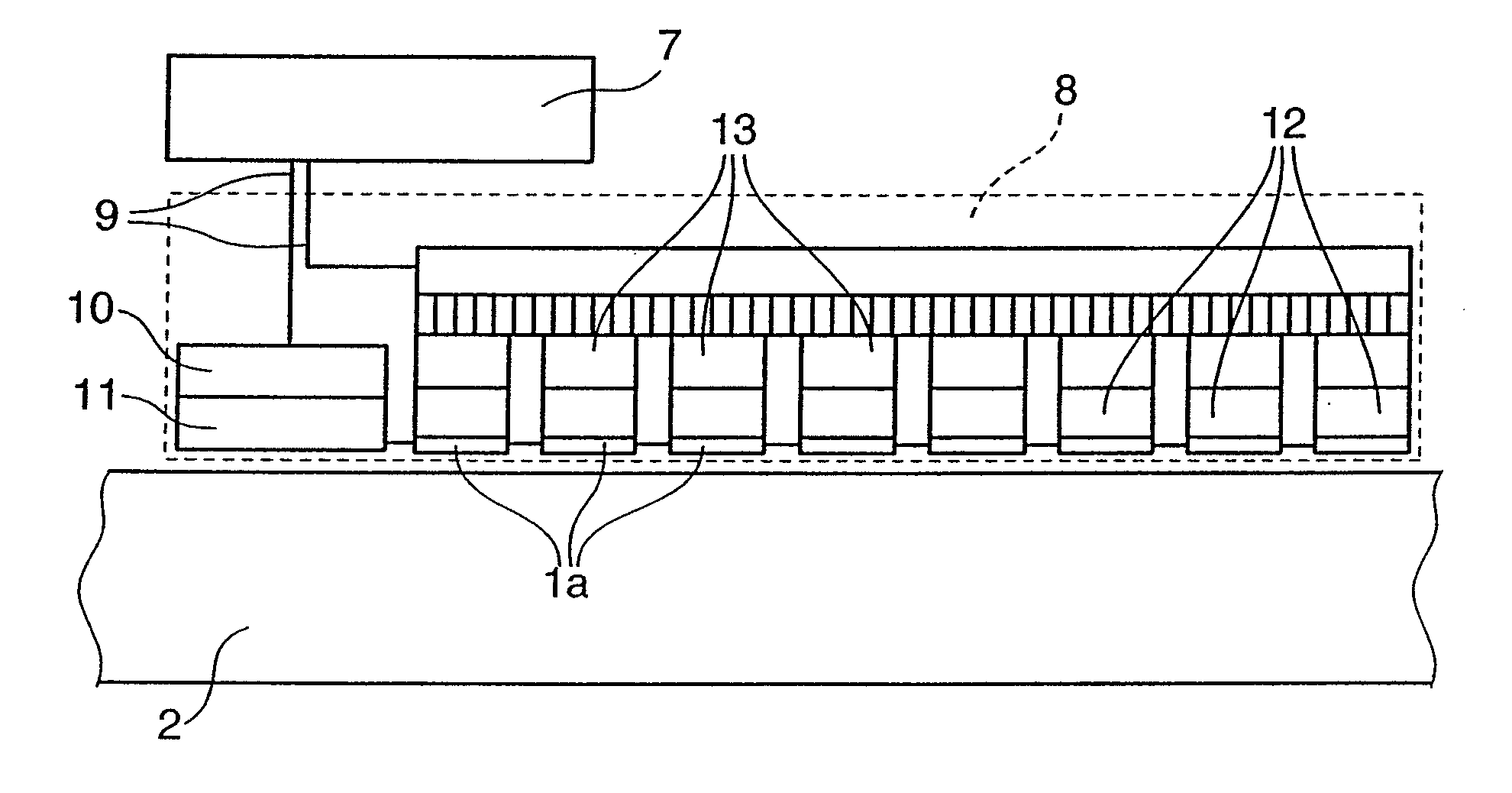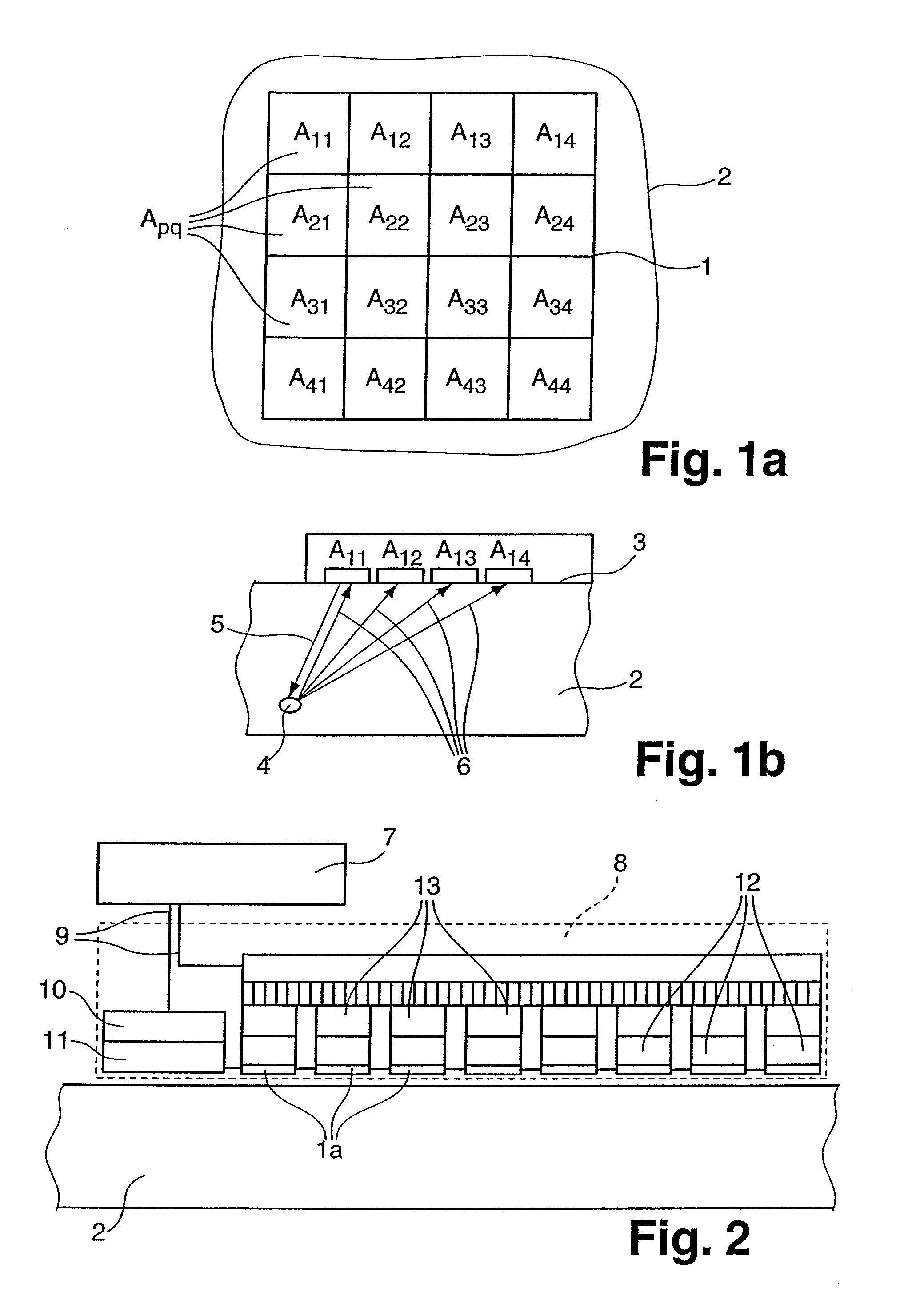Method using ultrasound for the non-destructive examination of a test body
a test body and non-destructive technology, applied in the direction of solid magnetic measurement, and material analysis using sonic/ultrasonic/infrasonic waves. the amount of time and technical equipment required to examine the test body as completely as possible, and the measurement resolution is poor. the effect of reducing the number and thickness, reducing the number of devices, and reducing the number o
- Summary
- Abstract
- Description
- Claims
- Application Information
AI Technical Summary
Benefits of technology
Problems solved by technology
Method used
Image
Examples
Embodiment Construction
[0045]FIG. 1a shows a top schematical view of a 4×4 transducer array arrangement 1 with sixteen (n=16) ultrasonic transducers Apq. The indices p and q provide the position of the ultrasonic transducer Apq in the array according to row and column. The transducer array 1 is placed on the surface of a test body 2. In this preferred embodiment, the number i of transmitters equals 1 (i=1) and the number m of receivers equals 16 (m=n=16) are selected for all the to-be-conducted measurement periods.
[0046]FIG. 1b shows a cross section of a test body 2 with the cross section area oriented perpendicular to the surface of the test body and through the first row of the ultrasonic transducer array 1 placed on the surface 3. Disposed on surface 3 of the test body 2 are, therefore, the four ultrasonic transducers A11, A12, A13, A14, of array 1 and the other transducers A21-A44. It is assumed that an imperfection 4 is present in the test body 2.
[0047]In a first measurement period, the ultrasonic tr...
PUM
 Login to View More
Login to View More Abstract
Description
Claims
Application Information
 Login to View More
Login to View More - R&D
- Intellectual Property
- Life Sciences
- Materials
- Tech Scout
- Unparalleled Data Quality
- Higher Quality Content
- 60% Fewer Hallucinations
Browse by: Latest US Patents, China's latest patents, Technical Efficacy Thesaurus, Application Domain, Technology Topic, Popular Technical Reports.
© 2025 PatSnap. All rights reserved.Legal|Privacy policy|Modern Slavery Act Transparency Statement|Sitemap|About US| Contact US: help@patsnap.com


